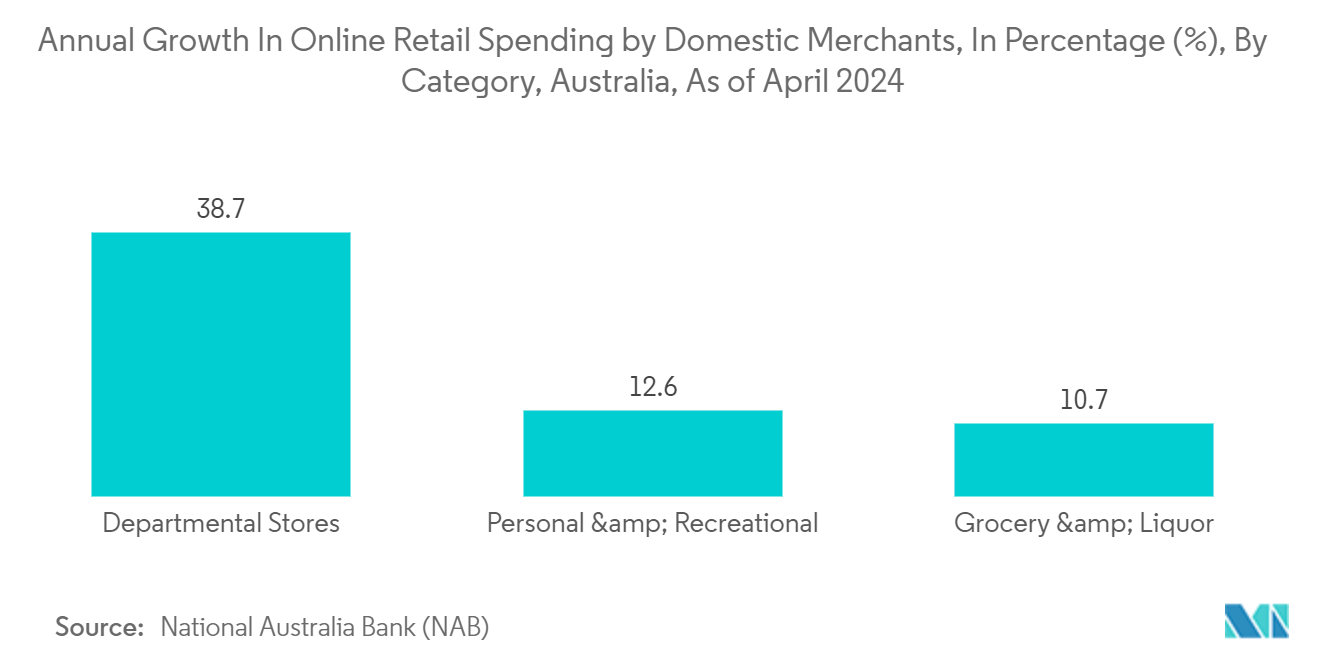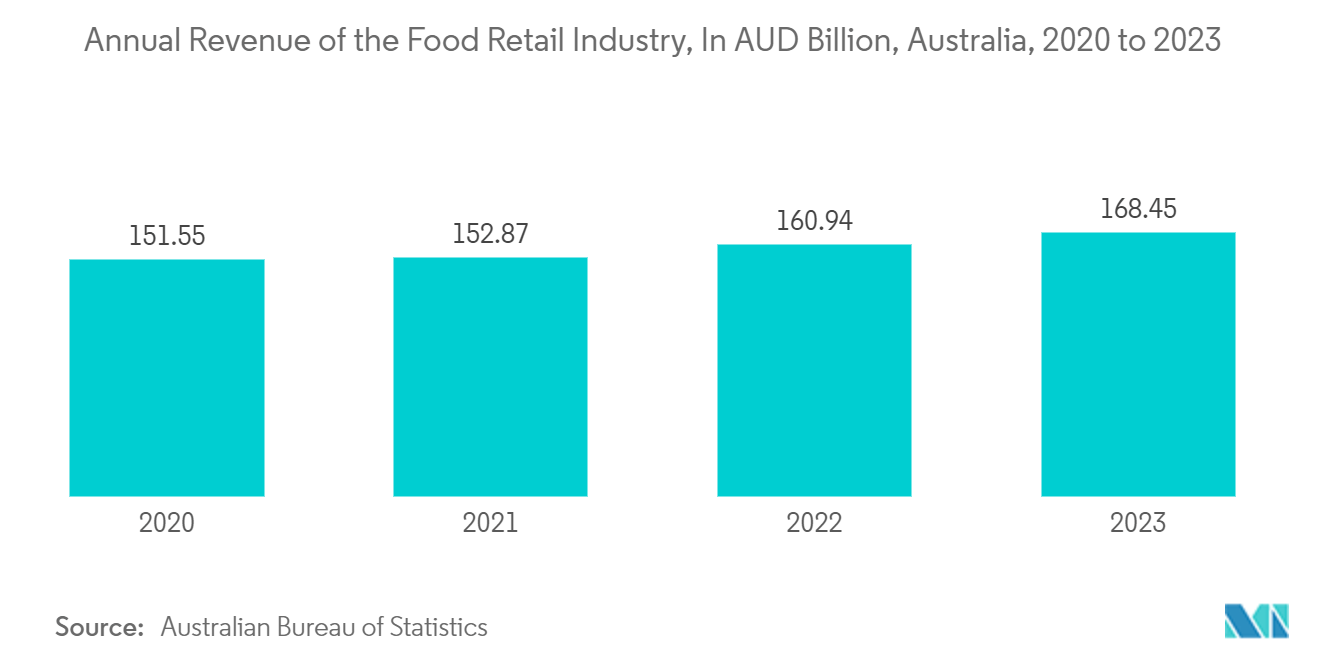Market Trends of ANZ Pouch Packaging Industry
Rising Demand From E-commerce for Convenient Packaging Products
- Lifestyle changes are propelling the pouch packaging market in the region. The market witnessed an increase in demand for single-serve and convenient portable packs. Australia's rising prominence in food exports can be attributed to the surge in e-commerce and enhanced logistics. Brands in the packaging market are pivoting toward enhancing brand experiences, with a notable emphasis on convenience.
- According to a survey by Australia Post, the e-commerce sector witnessed rapid growth, including food and liquor, which accounted for a 20.6% share of online purchases and an 11.4% Y-o-Y increase. Additionally, stores encompassing large retailers and online marketplaces accounted for an 18.1% share of online purchases, marking an 8.6% Y-o-Y increase.
- Manufacturers in Australia are increasingly adopting convenient and flexible packaging solutions. The surge in e-commerce has been a game-changer, reshaping the packaging market. Manufacturers are gravitating toward flexible packaging primarily for its promise of swifter and more secure product deliveries.
- According to Retail NZ, by 2030, online purchases are projected to account for 20% of all retail sales in New Zealand. Consumers increasingly demand omnichannel retailing, expecting a seamless shopping journey. Traditional retailers must pivot, prioritizing and marketing their online platforms to stay competitive. Embracing diverse communication channels for customer engagement is set to become standard practice.
- According to the National Australia Bank, in the annual growth in online retail spending by domestic merchants as of April 2024, the departmental stores took the top position with 38.7%, followed by the personal and recreational industry with 12.6% and grocery and liquor with 10.7%. Households prefer more flexible packaging over rigid options to align with their evolving lifestyles. With the rise of smaller households, the demand for single-serve packaging is increasing.

Ready-to-eat Meals and the Food Industry are Expected to Witness Significant Growth
- Ready-to-eat packaged meals are popular in Australia, driven by the growing working population and evolving work-life dynamics. As per a CSIRO report, the domestic consumption of prepared and frozen packaged meals is projected to be valued at USD 3.7 billion by 2030, reflecting spending patterns and demographic shifts.
- As Australia ramps up its production of convenient meals, the demand for flexible packaging is set to soar, fueling market growth. Flexible packaging pouches equipped with spouts and closures preserve freshness and flavor and accommodate a wide array of solid and liquid food products.
- Australia's packaging market is primarily propelled by shifting lifestyles, with a notable surge in demand for portable food packs. Additionally, bolstered by a rise in e-commerce, Australia is solidifying its position as a critical player in the food trade. According to the Australian Bureau of Statistics, the annual revenue of the food retail industry in 2020 was AUD 151.55 billion, which increased to AUD 168.45 billion in 2023. Since 2004, Australia's food retail revenue has witnessed steady year-on-year growth.
- According to the International Monetary Fund (IMF), the country's employment is expected to reach 2.97 million from 2.79 million in 2021. New Zealand's grocery sector is dominated by three key players: Foodstuffs New Zealand, Progressive Enterprises (operating as Countdown), and the Warehouse Group, the latter resembling a Walmart, with a significant focus on groceries. These three entities command a staggering 90% share of the nation's grocery retail landscape. Notably, the sector is further diversified by a mix of independents, greengrocers, and small convenience stores.
- According to the US Department of Agriculture, with price inflation soaring 7%, consumers in New Zealand are shifting a significant portion of their food spending from discretionary items to staples. This adjustment has led to a more discerning approach to luxury goods. Consumers are gravitating toward products that offer a unique selling point or boast notable health benefits, whether in actual nutrition or perceived well-being. The retail market in New Zealand has continued to show strong sales. Due to New Zealand's current inflationary environment, supermarkets and grocery sales are witnessing rapid growth, driving the market growth as well.


